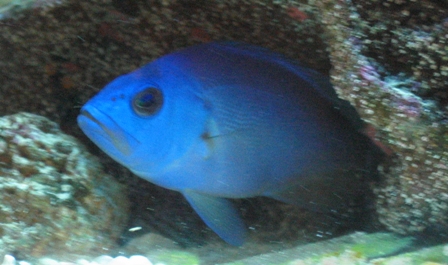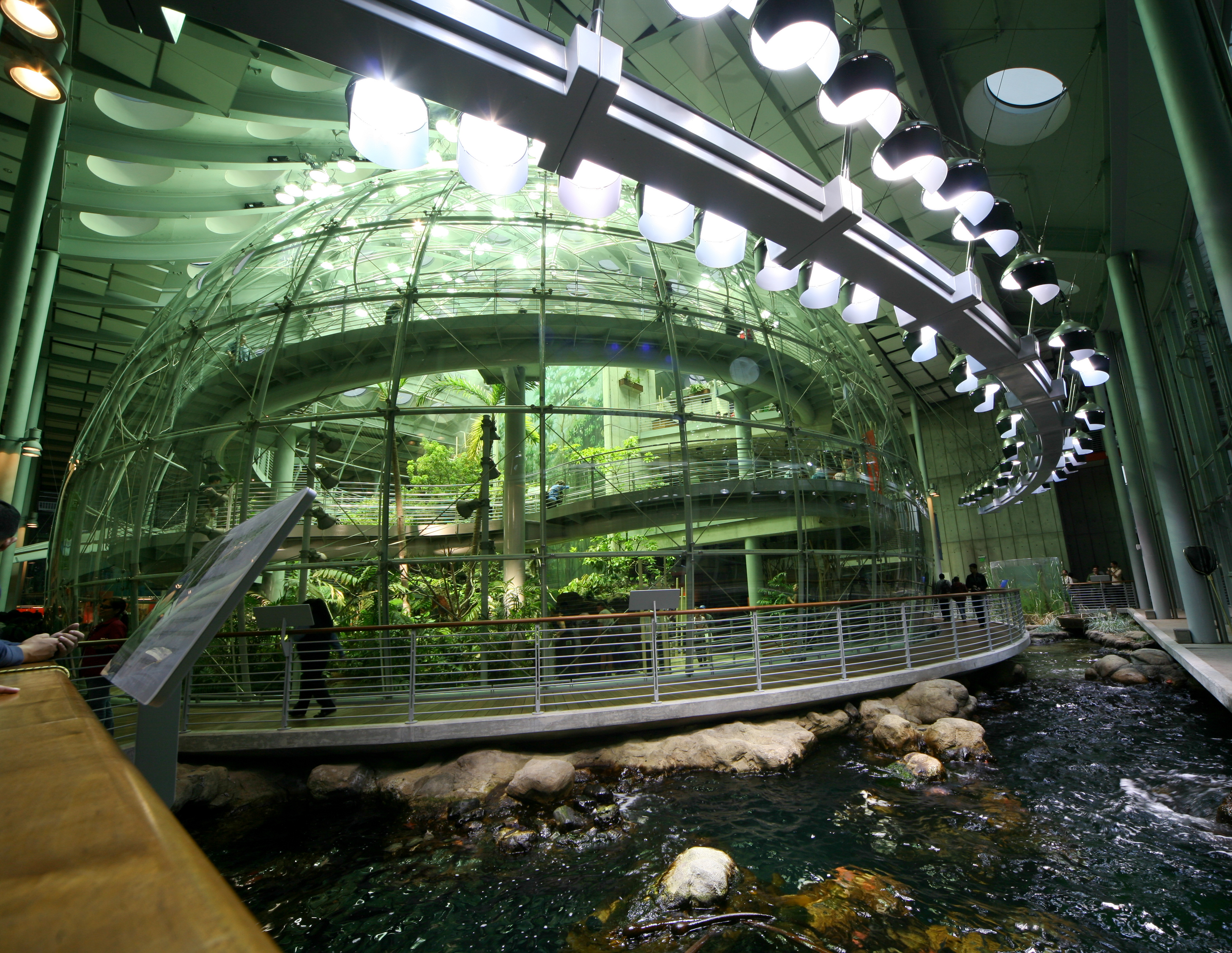|
Hypoplectrus Gummigutta
''Hypoplectrus gummigutta'', commonly called the golden hamlet, is a species of marine ray-finned fish. They are sea bass from the subfamily Serraninae and the greater family Serranidae, which also includes the groupers and anthias. The golden hamlet was first described in 1852 by zoologist Felipe Poey (1799-1891) as ''Plectropoma gummigutta'' before being given its accepted name: ''Hypoplectrus gummigutta.'' It is found in the western Atlantic Ocean and occasionally makes its way into the aquarium trade. Description The golden hamlet is morphologically similar to all other hamlets. It has a laterally compressed head with a short snout and a straight forehead. The single dorsal fin has 14–17 rays. It has long pelvic fins and a slightly forked caudal fin. The head, body, and fins are golden-yellow. On the head, there are typically one or more possibly large dark spots bordered by iridescent blue.Domeier, Michael L. Speciation in the serranid fish Hypoplectrus (Publication No. ... [...More Info...] [...Related Items...] OR: [Wikipedia] [Google] [Baidu] |
Felipe Poey
Felipe Poey (May 26, 1799 – January 28, 1891) was a Cuban zoologist. Biography Poey was born in Havana, the son of French and Spanish parents. He spent several years (1804 to 1807) of his life in Pau, Pyrénées-Atlantiques, Pau then studied law in Madrid. He became a lawyer in Spain but was forced to leave due to his freethought, liberal ideas, returning to Cuba in 1823. He began to concentrate on the study of the natural science and traveled to France in 1825 with his wife. He began writing on the butterflies of Cuba and acquiring knowledge on fish, later supplying Georges Cuvier and Achille Valenciennes, Valenciennes with fish specimens from Cuba. He took part in the foundation, in 1832, of the Société Entomologique de France. Poey returned to Cuba in 1833 where he founded the Museum of Natural History in 1839. In 1842, he became the first professor of zoology and comparative anatomy at the University of Havana. He also took part in the creation of the Academy of Science ... [...More Info...] [...Related Items...] OR: [Wikipedia] [Google] [Baidu] |
Fish Keeping
A fish (: fish or fishes) is an aquatic, anamniotic, gill-bearing vertebrate animal with swimming fins and a hard skull, but lacking limbs with digits. Fish can be grouped into the more basal jawless fish and the more common jawed fish, the latter including all living cartilaginous and bony fish, as well as the extinct placoderms and acanthodians. In a break to the long tradition of grouping all fish into a single class (Pisces), modern phylogenetics views fish as a paraphyletic group. Most fish are cold-blooded, their body temperature varying with the surrounding water, though some large active swimmers like white shark and tuna can hold a higher core temperature. Many fish can communicate acoustically with each other, such as during courtship displays. The study of fish is known as ichthyology. The earliest fish appeared during the Cambrian as small filter feeders; they continued to evolve through the Paleozoic, diversifying into many forms. The earlies ... [...More Info...] [...Related Items...] OR: [Wikipedia] [Google] [Baidu] |
Fish Of The Dominican Republic
A fish (: fish or fishes) is an aquatic animal, aquatic, Anamniotes, anamniotic, gill-bearing vertebrate animal with swimming fish fin, fins and craniate, a hard skull, but lacking limb (anatomy), limbs with digit (anatomy), digits. Fish can be grouped into the more basal (phylogenetics), basal jawless fish and the more common jawed fish, the latter including all extant taxon, living cartilaginous fish, cartilaginous and bony fish, as well as the extinct placoderms and acanthodians. In a break to the long tradition of grouping all fish into a single Class (biology), class (Pisces), modern phylogenetics views fish as a paraphyletic group. Most fish are ectotherm, cold-blooded, their body temperature varying with the surrounding water, though some large nekton, active swimmers like white shark and tuna can hold a higher core temperature. Many fish can communication in aquatic animals#Acoustic, communicate acoustically with each other, such as during courtship displays. The stud ... [...More Info...] [...Related Items...] OR: [Wikipedia] [Google] [Baidu] |
Hypoplectrus
''Hypoplectrus'' is a genus of fishes commonly known as hamlets, found mainly in coral reefs in the Caribbean Sea and the Gulf of Mexico, particularly around Florida and the Bahamas. They are a popular choice for hobbyist saltwater aquariums, and come in a variety of colors. Reproduction Hamlets are simultaneous hermaphrodite A hermaphrodite () is a sexually reproducing organism that produces both male and female gametes. Animal species in which individuals are either male or female are gonochoric, which is the opposite of hermaphroditic. The individuals of many ...s (or synchronous hermaphrodites): They have both male and female sexual organs at the same time as an adult, meaning that they function as a male and female, making them one of the few vertebrates that are male and female at the same time. They seem quite at ease mating in front of divers, allowing observations in the wild to occur readily. They do not practice self-fertilization, but when they find a mate, th ... [...More Info...] [...Related Items...] OR: [Wikipedia] [Google] [Baidu] |
Plankton
Plankton are the diverse collection of organisms that drift in Hydrosphere, water (or atmosphere, air) but are unable to actively propel themselves against ocean current, currents (or wind). The individual organisms constituting plankton are called plankters. In the ocean, they provide a crucial source of food to many small and large aquatic organisms, such as bivalves, fish, and baleen whales. Marine plankton include bacteria, archaea, algae, protozoa, microscopic fungi, and drifting or floating animals that inhabit the saltwater of oceans and the brackish waters of estuaries. fresh water, Freshwater plankton are similar to marine plankton, but are found in lakes and rivers. Mostly, plankton just drift where currents take them, though some, like jellyfish, swim slowly but not fast enough to generally overcome the influence of currents. Although plankton are usually thought of as inhabiting water, there are also airborne versions that live part of their lives drifting in the at ... [...More Info...] [...Related Items...] OR: [Wikipedia] [Google] [Baidu] |
Hermaphrodite
A hermaphrodite () is a sexually reproducing organism that produces both male and female gametes. Animal species in which individuals are either male or female are gonochoric, which is the opposite of hermaphroditic. The individuals of many taxonomic groups of animals, primarily invertebrates, are hermaphrodites, capable of producing viable gametes of both sexes. In the great majority of tunicates, mollusks, and earthworms, hermaphroditism is a normal condition, enabling a form of sexual reproduction in which either partner can act as the female or male. Hermaphroditism is also found in some fish species, but is rare in other vertebrate groups. Most hermaphroditic species exhibit some degree of self-fertilization. The distribution of self-fertilization rates among animals is similar to that of plants, suggesting that similar pressures are operating to direct the evolution of selfing in animals and plants. A rough estimate of the number of hermaphroditic animal species ... [...More Info...] [...Related Items...] OR: [Wikipedia] [Google] [Baidu] |
Mona Passage
The Mona Passage () is a strait that separates the islands of Hispaniola and Puerto Rico. The Mona Passage connects the Atlantic Ocean to the Caribbean Sea and is an important shipping route between the Atlantic and the Panama Canal. The Mona Passage is long. It is fraught with variable tidal currents created by large islands on either side of it, and by sand banks that extend out from both coasts. Islands There are three small islands in the Mona Passage: * Mona Island lies close to the middle of the Mona Passage. * northwest of Mona Island is the much smaller Monito Island. * northeast of Mona Island and much closer () to the Puerto Rican mainland is Desecheo Island. Structure and seismicity The Passage was the site of a devastating earthquake and tsunami that hit western Puerto Rico in 1918.http://soundwaves.usgs.gov/2007/05/ Uri ten Brink, ''New Bathymetric Map of Mona Passage, Northeastern Caribbean, Aids in Earthquake- and Tsunami-Hazard Mitigation,'' USGS Sound Wave ... [...More Info...] [...Related Items...] OR: [Wikipedia] [Google] [Baidu] |
California Academy Of Sciences
The California Academy of Sciences is a research institute and natural history museum in San Francisco, San Francisco, California, that is among the largest List of natural history museums, museums of natural history in the world, housing over 46 million specimens. The academy began in 1853 as a learned society and still carries out a large amount of original research. The institution is located in Golden Gate Park on the West Side (San Francisco), West Side of San Francisco. Completely rebuilt in 2008, the academy's primary building in Golden Gate Park covers . In early 2020, before the COVID-19 pandemic, the California Academy of Sciences had around 500 employees and an annual revenue of about $33 million. Governance The California Academy of Sciences, California's oldest operating museum and research institution for the natural sciences, is governed by a 41-member board of trustees who are nominated and chosen by the California Academy of Sciences Fellows. The Academy Fello ... [...More Info...] [...Related Items...] OR: [Wikipedia] [Google] [Baidu] |
Ray-finned Fish
Actinopterygii (; ), members of which are known as ray-finned fish or actinopterygians, is a class of bony fish that comprise over 50% of living vertebrate species. They are so called because of their lightly built fins made of webbings of skin supported by radially extended thin bony spines called '' lepidotrichia'', as opposed to the bulkier, fleshy lobed fins of the sister clade Sarcopterygii (lobe-finned fish). Resembling folding fans, the actinopterygian fins can easily change shape and wetted area, providing superior thrust-to-weight ratios per movement compared to sarcopterygian and chondrichthyian fins. The fin rays attach directly to the proximal or basal skeletal elements, the radials, which represent the articulation between these fins and the internal skeleton (e.g., pelvic and pectoral girdles). The vast majority of actinopterygians are teleosts. By species count, they dominate the subphylum Vertebrata, and constitute nearly 99% of the over 30,000 extant ... [...More Info...] [...Related Items...] OR: [Wikipedia] [Google] [Baidu] |
Catalog Of Fishes
Catalog of Fishes is a comprehensive on-line database and reference work on the scientific names of fish species and genera. It is global in its scope and is hosted by the California Academy of Sciences. It has been compiled and is continuously updated by the curator emeritus of the CAS fish collection, William N. Eschmeyer. The taxonomy maintained by the Catalog of Fishes is considered authoritative and it is used as a baseline reference for instance by the broader global fish database FishBase, which involves cross-references to the Catalog's information for all accepted taxa. the searchable catalogue contains entries for about 58,300 fish species names, about 33,400 of which are currently accepted (valid), and for some 10,600 genera (5,100 valid). [...More Info...] [...Related Items...] OR: [Wikipedia] [Google] [Baidu] |






